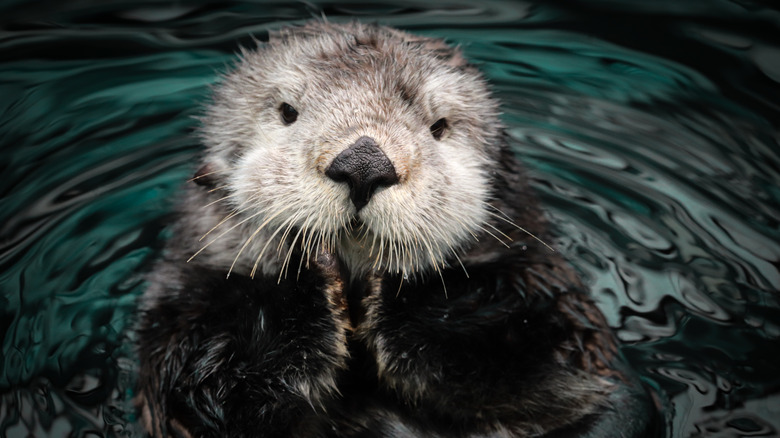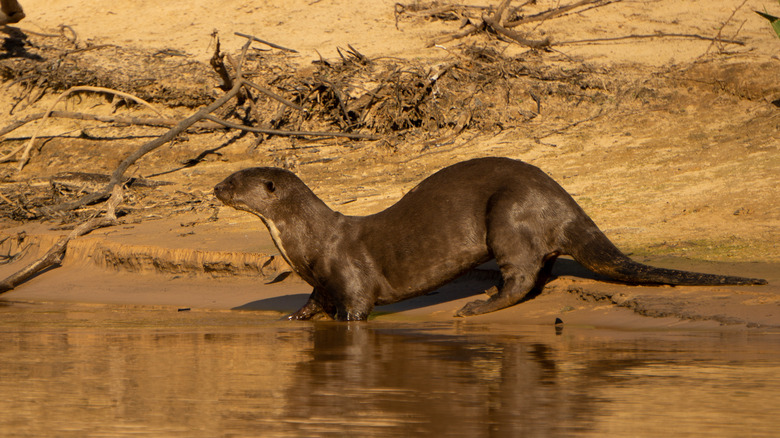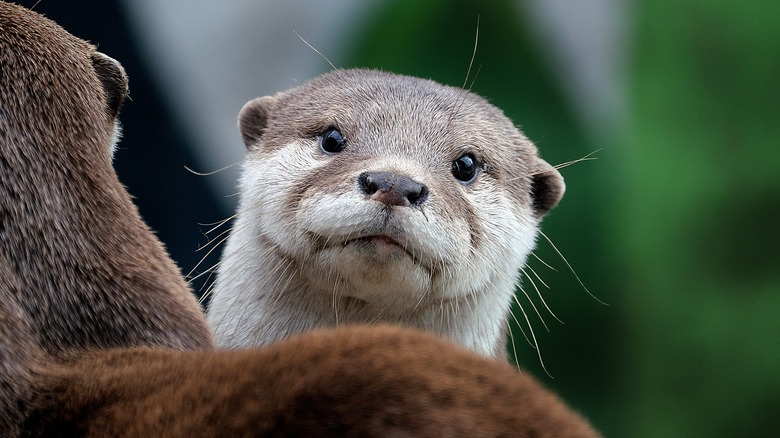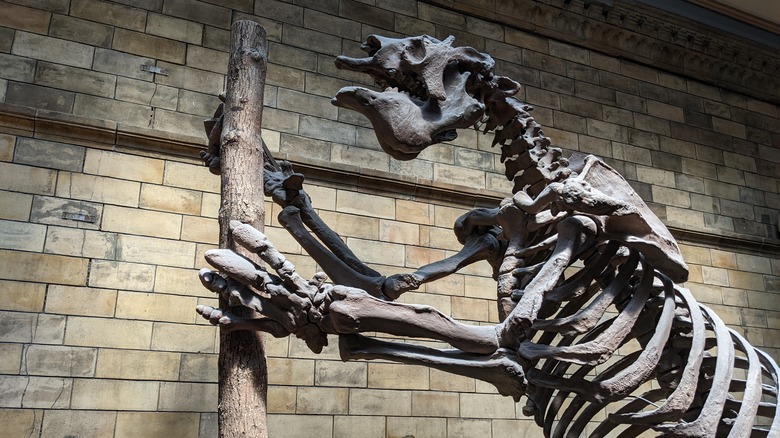An Ethiopian Discovery Shows That Lion-Sized Otters Once Roamed The Planet
Very different animals have been King of the World at different periods in Earth's evolutionary history. Most of us, for instance, are aware of the age of the dinosaurs. For millions of years, these giant reptiles reigned supreme on Planet Earth. The world as it was back then would look absolutely alien to us today. With massive pterodactyls and stegosauruses roaming the plains, humans would feel like out-of-place little specks in the universe.
But even long after the dinosaurs died out, there were plenty of other massive creatures roaming the Earth. These animals can mostly be sorted into the subcategory of megafauna, another word for especially large animals, per Treehugger. It's a bit of a debate what, exactly, is big enough to count as megafauna, but elephants and moose might be two modern examples.
Unfortunately, most historic megafauna have now died out, according to the Australian Museum. The exact reasons for their deaths vary, but several megafauna were likely driven to extinction by humans thousands or millions of years ago, per Treehugger. That includes the giant Ethiopian otter: a new species discovered by scientists which disappeared from Earth over two million years ago, according to the Columbia Climate School.
The giant Ethiopian otter
Unlike some archeological discoveries, the giant Ethiopian otter — which has the scientific name Enhydriodon omoensis – wasn't found by a single scientist or even a single group of scientists, per the Columbia Climate School. Instead, bones from similar otters were found by various different groups over a long period of time, until enough were collected to definitively rule that a new species had been found.
So what was the otter like, and where did it live? The otter's most notable feature is, of course, its size. A prime example of historical megafauna, the otter weighed more than 400 pounds, per the Columbia Climate School. For reference, that's about the size of a female polar bear, according to Polar Bear Guidebook, or a lion.
The bones in question were found in the Lower Omo Valley in what is now southwestern Ethiopia, according to All That's Interesting. Further investigation into the bones dated them to between 2.5 million and 3.5 million years ago. At that stage, humans already existed, meaning your ancestors may have come in contact with these massive creatures (via Columbia Climate School).
What makes the Ethiopian otter unique
Ethiopian giant otters aren't the only huge example of their species archeologists have found. In 2017, scientists in China discovered wolf-sized otter bones, according to The Daily Mail. These otters, which would have weighed more than a hundred pounds, were found in a lakebed, where the animals hunted mollusks and shellfish, per Treehugger.
So what makes the Ethiopian otters special? It comes down to their diets. Sure, scientists can't directly tell what the otters might have eaten by observing their behavior or dissecting their stomachs. But they can look at carbon isotopes in the otter's teeth, which can actually show a surprising amount about an animal's prey, according to the Columbia Climate School. This research showed that the otters appeared to be largely terrestrial animals, eating prey that was also terrestrial. In other words, they didn't necessarily live in water. This is very different from modern otter species, which mostly live in the water (per National Geographic), and raises a lot of questions about these Ethiopian otters' lives.
Other extinct megafauna
Plenty of other animals had giant-sized ancestors, too. For instance, there used to be giant sloths in South America, according to Tree Hugger. These big, slow giants could weigh more than four tons. They ultimately went extinct around 10,000 years ago, probably when human hunters migrated to the region and took them down.
There were also giant beavers in the United States that weighed as much as 200 pounds each. And in the oceans, there was the famous megaladon shark, a massive animal similar to the great white shark that chomped down on all sorts of marine life, and eventually went extinct due to changes in the climate a few million years ago.
But don't think all animals used to be huge. There were also mini fauna: tinier versions of the animals we know today. For instance, there were both miniature elephants and miniature mammoths back in the day, per World Atlas.



